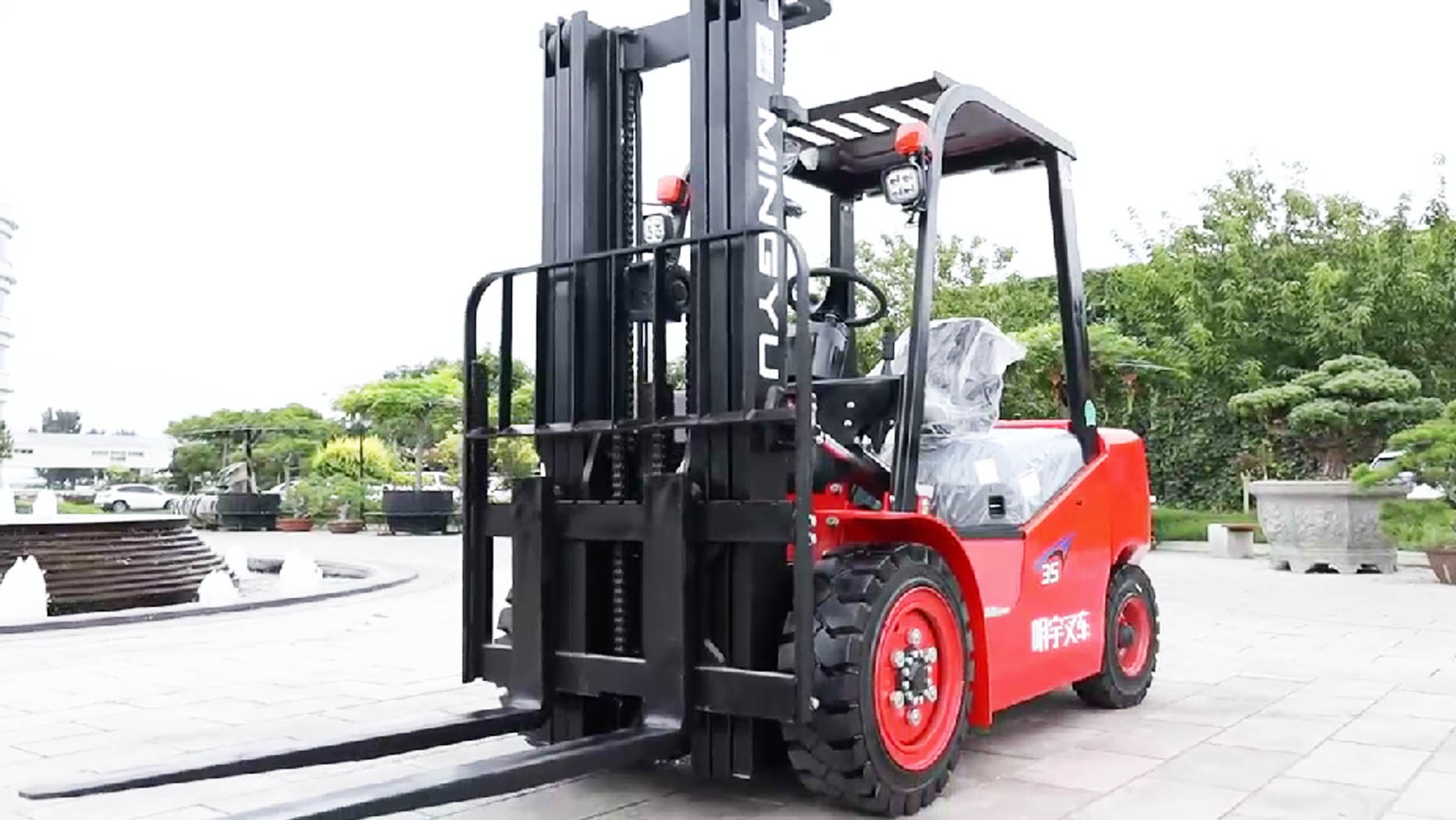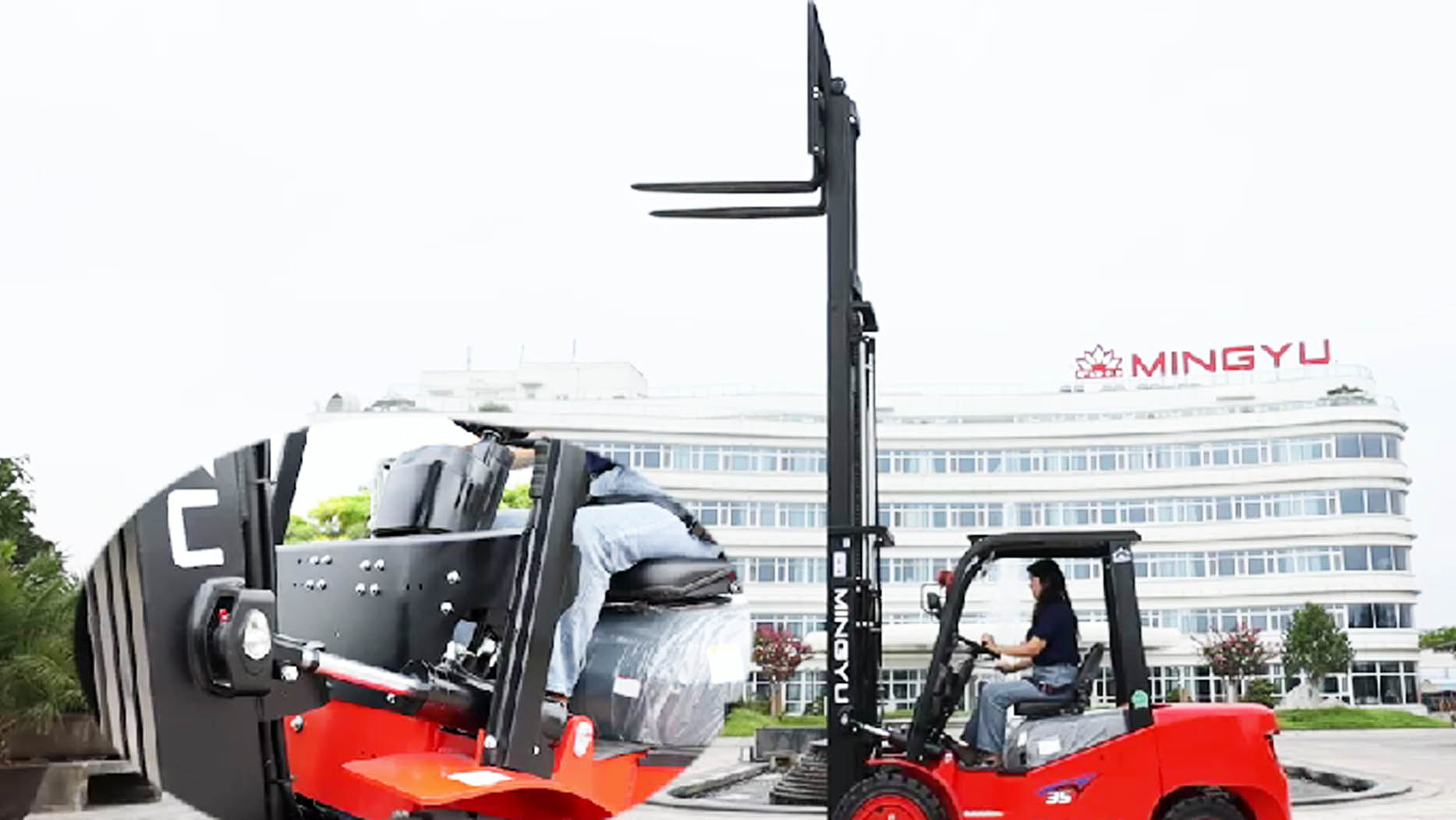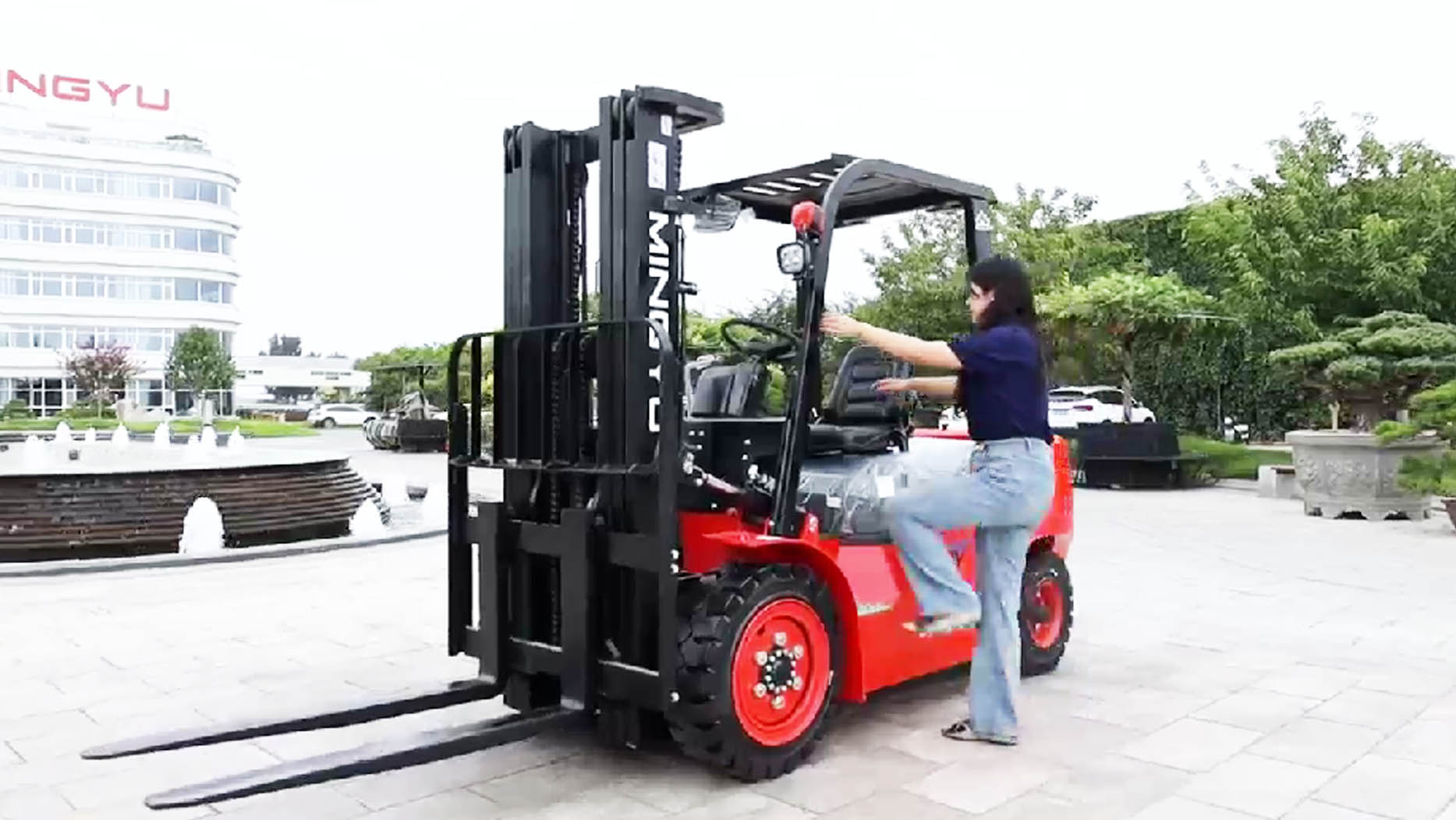In the world of material handling, the forklift is an indispensable piece of equipment, but choosing the right type—specifically between diesel and electric forklifts—is a critical decision that impacts operational costs, environmental footprint, workplace safety, and overall efficiency. While both are designed to lift and move loads, their fundamental differences in power source, design, and performance make them suited for distinct environments and applications.
Understanding these distinctions is crucial for businesses looking to optimize their fleet, comply with regulations, and ensure their material handling operations are as productive and cost-effective as possible. There’s no single "better" option; the ideal choice hinges entirely on your specific operational needs.
1. Power Source and Environmental Impact: The Core Difference
This is the most fundamental distinction, driving many of the subsequent differences.
Diesel Forklifts:
Power Source: Rely on an internal combustion engine that runs on diesel fuel.
Emissions: Produce exhaust fumes containing carbon monoxide (CO), nitrogen oxides (NOx), particulate matter (soot), and hydrocarbons.
Environmental Impact: Higher carbon footprint. Modern diesel forklifts (especially those compliant with Tier 4 Final/Stage V emissions standards) include complex aftertreatment systems (like Diesel Particulate Filters (DPF) and Selective Catalytic Reduction (SCR) requiring Diesel Exhaust Fluid (DEF)) to reduce harmful emissions. However, they are still considered high-emission compared to electric.
Noise: Significantly louder due to engine operation, which can contribute to noise pollution in the workplace.
Vibration: Produce more vibration, which can lead to operator fatigue over long shifts.
Ideal Environment: Exclusively or predominantly for outdoor use or in very well-ventilated indoor spaces with specialized exhaust systems, due to their emissions.
Electric Forklifts:
Power Source: Powered by large industrial batteries (lead-acid or lithium-ion) that drive electric motors for traction and hydraulics.
Emissions: Zero emissions at the point of operation. The carbon footprint is shifted to the electricity generation source.
Environmental Impact: Considered much greener, especially when powered by renewable energy. They contribute to cleaner air quality in indoor environments.
Noise: Very quiet operation, leading to a more comfortable and less fatiguing environment for operators and other workers.
Vibration: Minimal vibration, enhancing operator comfort and reducing wear on components.
Ideal Environment: Primarily for indoor use in warehouses, distribution centers, manufacturing facilities, and food processing plants where air quality, noise levels, and precision are critical. Can also be used outdoors in dry, mild conditions, but are not designed for rough terrain.

2. Performance and Capability: Matching Power to Task
The nature of the work heavily influences which forklift type is more suitable.
Diesel Forklifts:
Power & Torque: Offer superior power and high torque, making them ideal for heavy-duty applications. They can lift heavier loads (e.g., a forklift 3 ton diesel or much larger models) and are excellent at pushing, pulling, and climbing ramps with ease.
Refueling: Quick and easy refueling in minutes. This is a major advantage for multi-shift operations where continuous uptime is crucial.
Duty Cycle: Designed for continuous, high-intensity operation without performance degradation. They don't experience "power fade" as battery charge diminishes.
Terrain: Unmatched performance on rough, uneven, or unpaved terrain. Their robust design, higher ground clearance, and larger, often pneumatic, tires (sometimes 4WD) allow them to navigate mud, gravel, and inclines with stability and traction.
Electric Forklifts:
Power & Torque: Provide ample power for most indoor and many outdoor tasks. Modern electric forklifts are becoming increasingly powerful, challenging traditional diesel domains for some medium-duty applications.
Recharging: Requires hours for battery charging (typically 8-12 hours for lead-acid), followed by a cool-down period. Lithium-ion batteries offer faster charging and opportunity charging, significantly improving uptime. For multi-shift operations, additional batteries and battery changing equipment might be necessary.
Duty Cycle: Can experience some power degradation as the battery charge depletes. However, advanced battery management systems mitigate this.
Terrain: Best suited for smooth, flat surfaces. While some models can operate outdoors, they are not designed for rough terrain and their traction is limited on uneven or slippery ground. Using them in wet conditions needs careful consideration.
3. Cost Considerations: Initial Investment vs. Long-Term Expenditure
The financial outlay extends beyond the purchase price.
Diesel Forklifts:
Initial Cost: Generally, the initial purchase price of a diesel forklift can be lower than an equivalent electric forklift when factoring in the cost of batteries and charging infrastructure for the electric model.
Fuel Costs: Ongoing fuel costs fluctuate with diesel prices and can be a significant operational expense, especially for high-utilization machines.
Maintenance Costs: Typically have higher maintenance requirements due to more moving parts, engine fluids, and emission control systems. Engine overhauls are also more costly.
Resale Value: Often hold their value well due to their durability and widespread demand for tough applications.
Electric Forklifts:
Initial Cost: The upfront cost can be higher, primarily due to the expense of the industrial battery (especially lithium-ion) and the required charging infrastructure (chargers, battery rooms).
Fuel Costs: Lower "fuel" (electricity) costs compared to diesel, and these costs are generally more stable.
Maintenance Costs: Lower maintenance requirements due to fewer moving parts, no engine fluids, and simpler powertrains. This reduces labor and parts expenses over the lifespan.
Battery Replacement: Batteries have a finite lifespan (e.g., 5-7 years for lead-acid, longer for lithium-ion) and can be a significant replacement cost.
Resale Value: Can vary; older lead-acid models might see depreciation due to battery life, while lithium-ion models are increasingly sought after.
 4. Infrastructure and Logistics: Supporting Your Fleet
4. Infrastructure and Logistics: Supporting Your Fleet
The chosen forklift type dictates necessary site infrastructure.
Diesel Forklifts:
Fueling: Requires on-site diesel fuel storage and dispensing facilities, or access to commercial fuel stations. This involves safety protocols for fuel handling and spill containment.
Ventilation: Requires adequate ventilation if used indoors, or specialized exhaust scrubbers, to dissipate fumes.
Space: Generally require more space for operation and maintenance due to their size and exhaust clearance needs.
Electric Forklifts:
Charging: Requires dedicated charging stations and potentially a battery room for lead-acid batteries (for ventilation, watering, and swapping). Lithium-ion batteries simplify this with opportunity charging and no need for watering or dedicated battery rooms.
Power Supply: Requires sufficient electrical power supply to handle the charging load, especially for multiple forklifts.
Space: Can operate in tighter aisles and smaller spaces due to their often more compact design and absence of exhaust.
5. Operator Experience and Safety: Daily Operations
The operator's interaction with the forklift also differs.
Diesel Forklifts:
Experience: Familiar to many operators, especially those with heavy equipment background.
Safety: Concerns mainly revolve around exhaust fumes in enclosed spaces, noise, and vibration. Requires proper ventilation when operated indoors.
Ease of Use: Robust and straightforward controls for heavy-duty tasks.
Electric Forklifts:
Experience: Can offer smoother, quieter operation, which may reduce operator fatigue.
Safety: Eliminates emission concerns. Battery handling (for lead-acid) requires safety protocols (e.g., acid spills, heavy lifting for swapping).
Ease of Use: Often feature more advanced electronic controls, which can offer greater precision and customization.
 The Role of Manufacturers: MINGYU/MYZG and the Global Market
The Role of Manufacturers: MINGYU/MYZG and the Global Market
Manufacturers like MINGYU (often seen as MYZG for their material handling equipment) play a crucial role in both the diesel and electric forklift markets. They offer a diverse range of forklift models, including robust diesel forklift options (such as the popular forklift 3 ton diesel variants designed for heavy outdoor work) and increasingly competitive electric forklift lines.
Brands like MINGYU/MYZG provide accessible solutions, particularly for businesses seeking reliable performance without the premium price tag of some top-tier global brands. Their continuous development in both engine efficiency for diesel models and battery technology for electric ones helps to bridge the gap in features and performance across the different power sources. Whether you are looking for a powerful forklift 3 ton diesel for a construction site or an efficient electric forklift for a quiet warehouse, companies like MINGYU/MYZG provide options that are increasingly integrated with modern features and maintenance considerations.
Conclusion: Making the Right Choice
The choice between a diesel forklift and an electric forklift is not about one being inherently "better" than the other, but rather about selecting the machine that best fits your operational environment, budget, and long-term strategic goals.
Choose a Diesel Forklift if: Your primary operations are outdoors, you handle very heavy or challenging loads, you require continuous, multi-shift operation with minimal refueling downtime, or you operate in harsh, unregulated environments.
Choose an Electric Forklift if: Your operations are predominantly indoors, air quality and noise reduction are priorities, you have access to suitable charging infrastructure, or you are seeking lower long-term running and maintenance costs with a reduced environmental footprint.
By carefully evaluating these key differences—from power source and environmental impact to performance, cost, and operational logistics—businesses can make an informed decision that drives efficiency, enhances safety, and contributes to the overall success of their material handling endeavors. Considering options from a range of suppliers, including reliable brands like MINGYU/MYZG, will further ensure that your chosen forklift is a perfect fit for your specific needs.
Post time:Jul.03.2025
